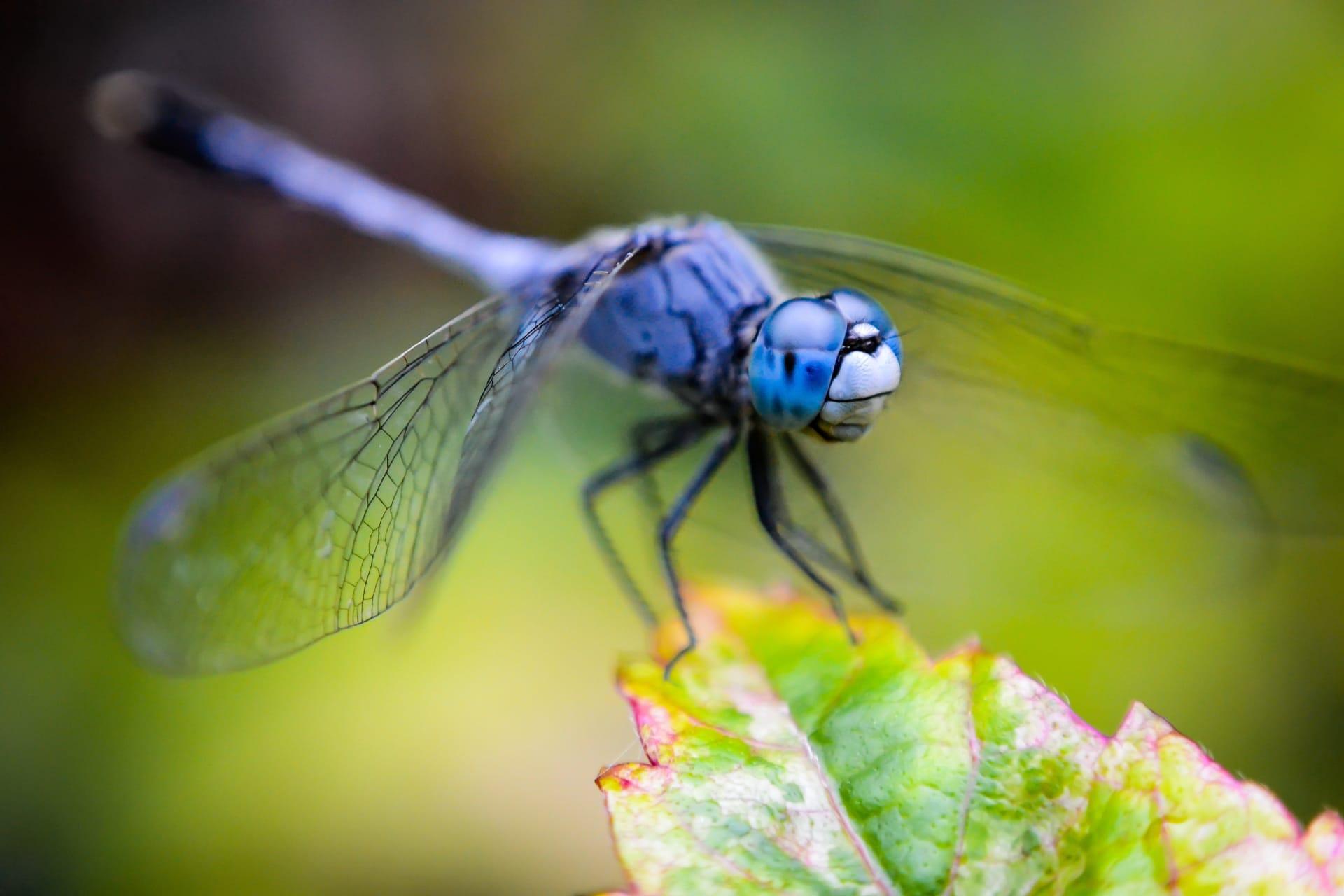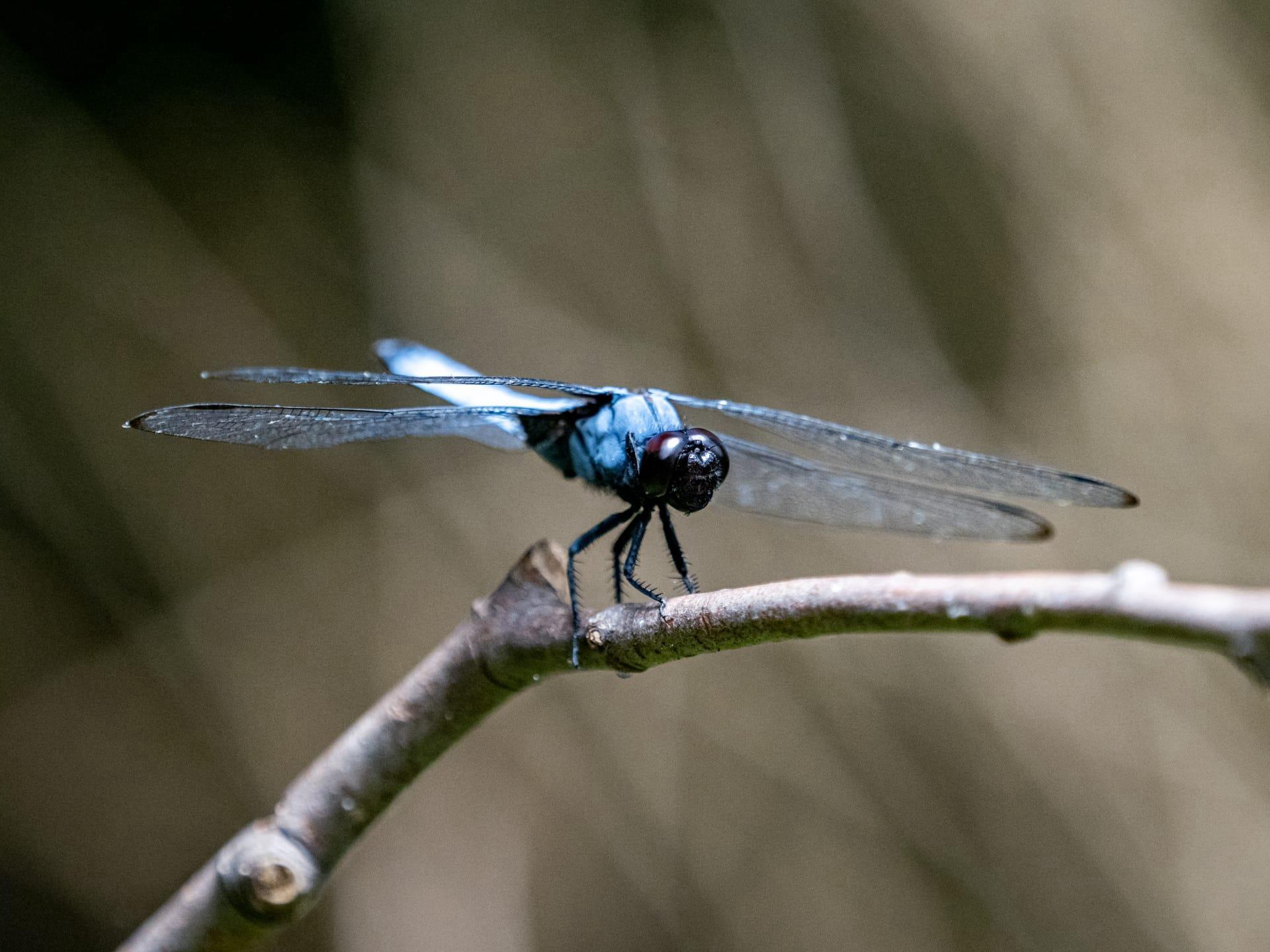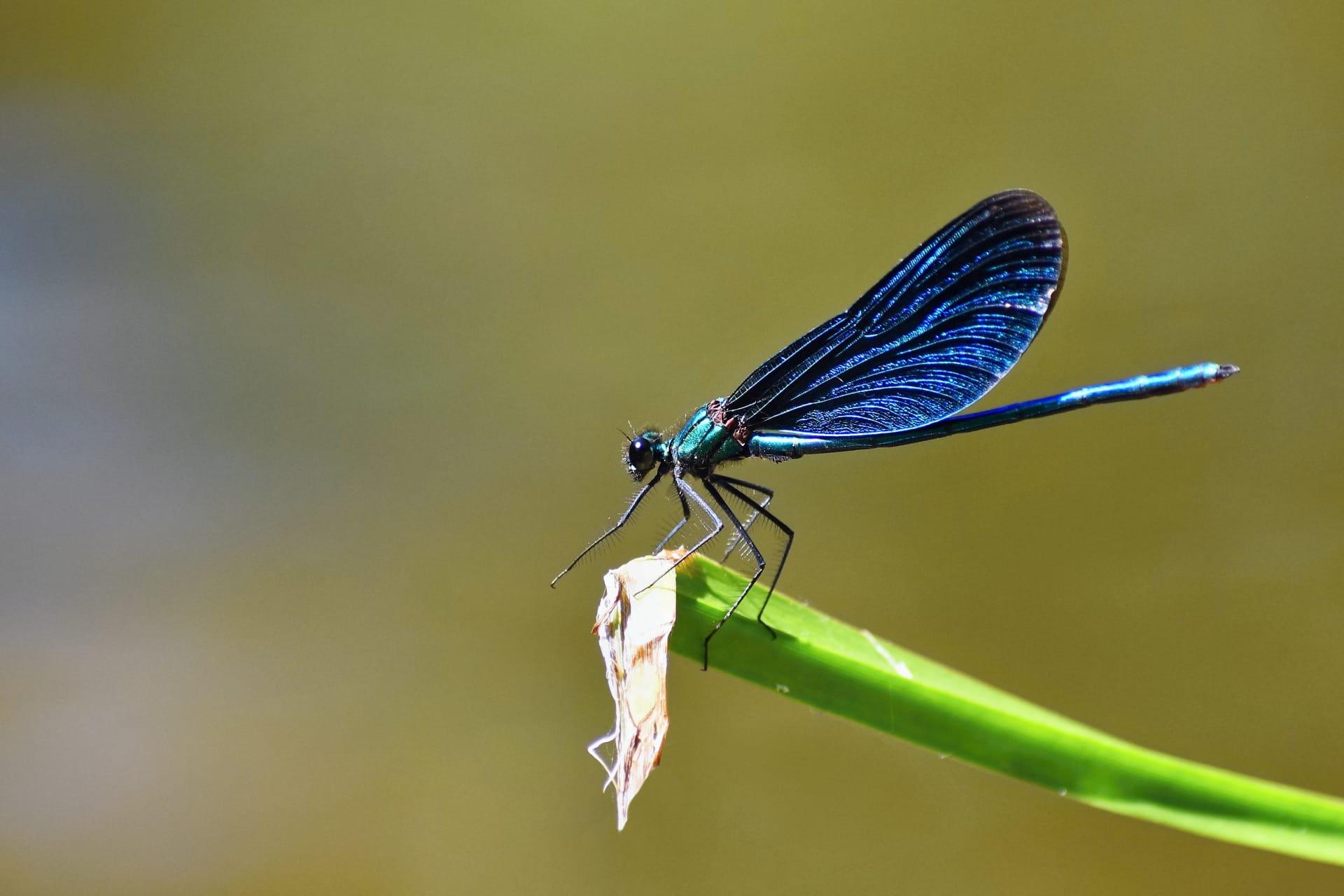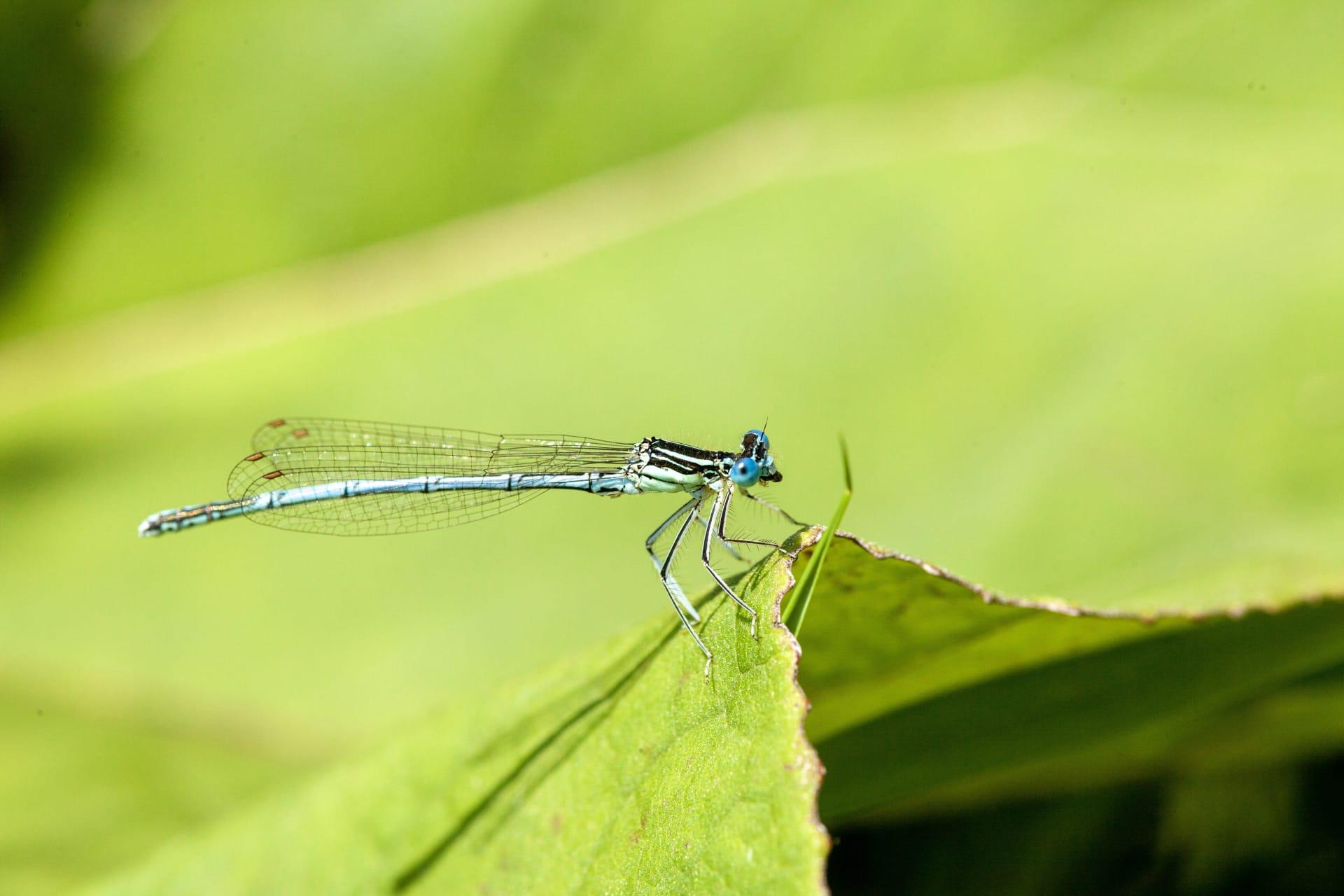1
Blue dragonflies, with their vibrant azure wings, are not just a feast for the eyes. These fascinating creatures can fly backward with the same ease as they fly forward. This incredible maneuverability is due to their wing structure, which allows each of their four wings to move independently. This skill is quite rare in the insect world and gives them a significant advantage when hunting prey or evading predators. Their agility in the air is akin to a helicopter, capable of hovering, darting, or cruising at speeds up to 35 miles per hour.
Another astounding fact about blue dragonflies is their extraordinary vision. Their large, multifaceted eyes cover most of their head, providing them with a near 360-degree field of view. Each eye is made up of up to 30,000 tiny lenses, or ommatidia, enabling them to detect the slightest movements even at a distance. This exceptional vision is not just about seeing a broad area; it also allows them to perceive a range of colors beyond human capabilities, including ultraviolet light. This feature is crucial for their survival, aiding in the detection of prey and mates.

2
When it comes to blue dragonflies, their reproductive process is as unique as their flight. The male blue dragonfly has a distinctive way of ensuring his lineage. Before mating, he uses his specially adapted appendages to remove any sperm left by other males from the female's reproductive tract. This behavior, known as sperm scooping, ensures that his genes are most likely to be passed on. Post-mating, some species of blue dragonflies exhibit mate-guarding behavior, where the male continues to hold onto the female until she lays her eggs, preventing other males from mating with her.
The lifespan of blue dragonflies is another intriguing aspect. While their adult life is relatively short, typically lasting only a few months, their larval stage, which occurs underwater, can last up to two years. During this time, the larvae, known as nymphs, undergo several molts as they grow. Nymphs are formidable predators in their aquatic environment, feeding on a variety of organisms, including mosquito larvae, fish, and even each other. Once they are ready to transition to adults, they emerge from the water and undergo a final molt, revealing their winged form.

3
Did you know that blue dragonflies are ancient creatures? They have been around for about 300 million years, making them one of the oldest insect species on Earth. This long history predates even the dinosaurs! The fossil records show that ancient dragonflies had wingspans of up to two feet, significantly larger than the modern blue dragonfly, which boasts a wingspan of about 4 to 5 inches. This ancient lineage speaks to the adaptability and resilience of these insects, having survived various environmental changes over the millennia.
Another fascinating aspect of blue dragonflies is their role as bioindicators. Their presence or absence in an ecosystem can reveal a lot about environmental health, particularly water quality. Blue dragonflies lay their eggs in water, and their nymphs live in aquatic environments. Therefore, they are sensitive to pollution and changes in water quality. A healthy population of blue dragonflies indicates a clean, unpolluted water body. Conversely, a decline in their numbers can signal environmental issues, prompting further investigation into water quality and ecosystem health.

4
Blue dragonflies are not just predators; they also play a vital role in controlling mosquito populations. A single dragonfly can eat hundreds of mosquitoes per day, making them a natural pest control agent. This appetite for mosquitoes extends to their nymph stage as well, where they actively hunt mosquito larvae in the water. This natural predation is essential for controlling mosquito populations, which can carry diseases such as malaria and the Zika virus. Encouraging blue dragonfly populations in areas plagued by mosquitoes can be an effective and environmentally friendly pest control method.
The flight of the blue dragonfly is not only a marvel in agility but also in endurance. They are among the few species of insects capable of long-distance migration. Similar to birds, blue dragonflies undertake annual migrations, traveling hundreds, sometimes thousands of miles. During these migrations, they form large groups, which can include thousands of individuals. This phenomenon is not just a spectacle but also a subject of scientific study, as researchers seek to understand the mechanisms behind their navigation and the environmental cues they use to time their migrations.

5
Did you know that blue dragonflies use the sun for navigation? They are known to migrate by following the sun, using it as a compass. This behavior is particularly evident during their long migration journeys. They are able to maintain a straight course by keeping the sun at a constant angle, a method known as solar navigation. This remarkable ability is yet another testament to their sophisticated sensory and navigational capabilities, allowing them to traverse long distances with remarkable accuracy.
Lastly, blue dragonflies exhibit a unique behavior known as obelisking. On extremely hot days, they position their bodies at a 45-degree angle to the sun, minimizing the surface area exposed to direct sunlight. This posture, named after the shape of an obelisk, helps regulate their body temperature and prevents overheating. This behavior is not only a fascinating adaptation to their environment but also a striking pose that highlights the beauty and intricacy of these remarkable insects.